Iohann Christoph Hes Tarot c.1750
Facsimile of Tarot de Marseille by Iohann Christoph Hes, Augsburg, c.1750.
The game of tarot was introduced to German countries from France during the 17th and 18th centuries, in the form of the “Besançon Tarot” and “Marseille Tarot” with French inscriptions. A splendid facsimile of a Marseille style tarot by Iohann Christoph Hes, Augsburg, c.1750 is shown here.
The original cards are preserved in the British Museum, and have been reproduced faithfully in all details.
Right: two of the original cards © The Trustees of the British Museum
Museum number 1896,0501.191 online here►
The facsimile is printed on high quality card and presented in a beautifully designed box with informative booklet.
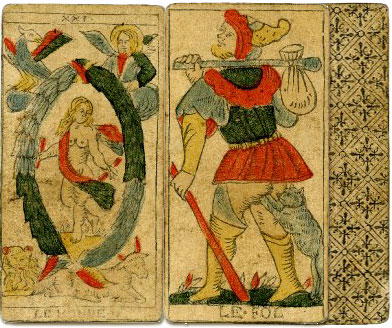
The Box and Booklets
The reproduction is printed in a limited edition of 900 copies, each one numbered and signed, accompanied by a booklet “Tarot in the German countries from the 16th to the 18th century” by Giordano Berti. In the booklet Berti reports new documentary evidence relating to the spread of Tarot in German regions (paintings, poems, handbook for tarot players, etc.). The deck comes in a fine box designed by Letizia Rivetti and includes a guide to cartomancy by Giulia Orsini.
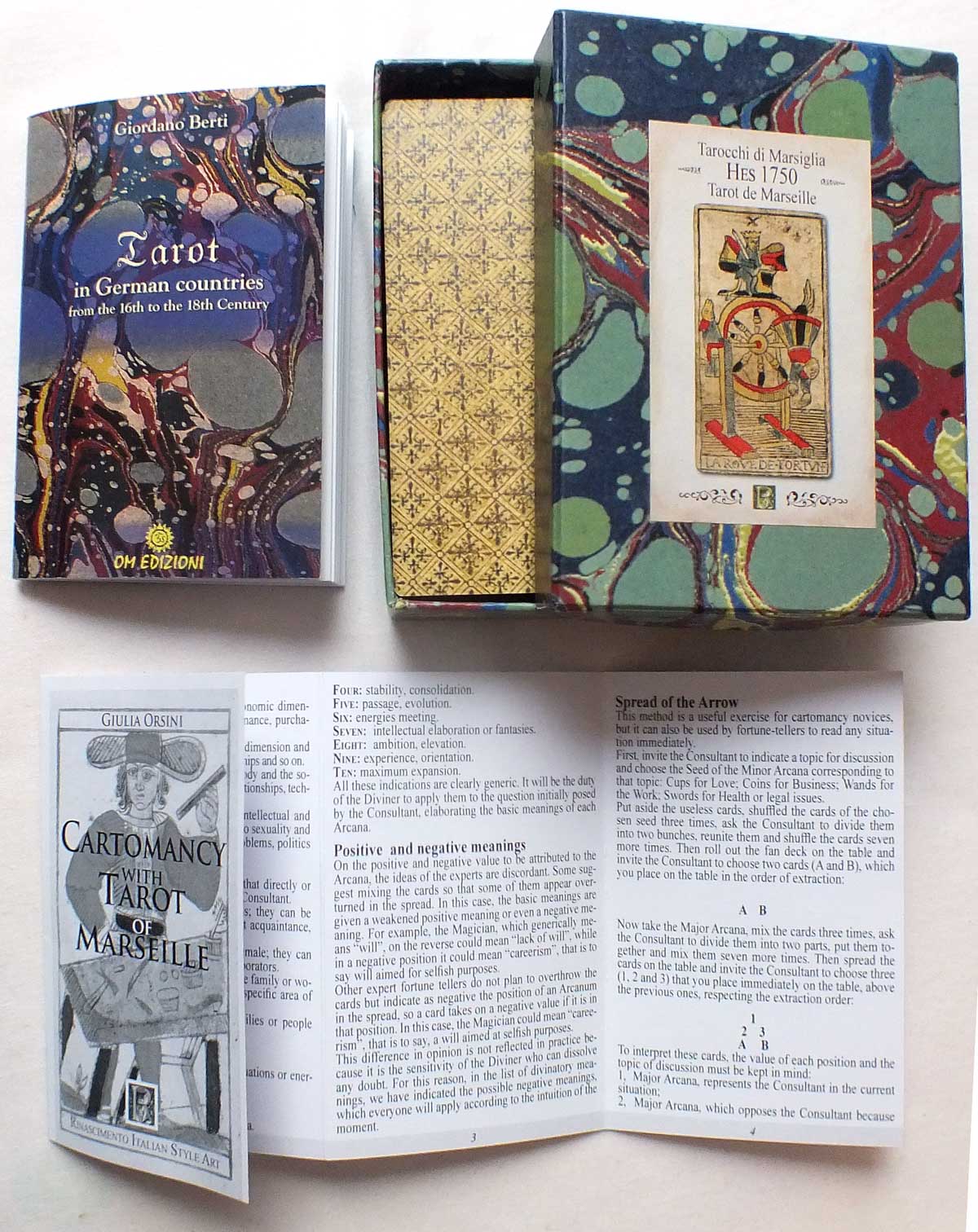
The Facsimile Cards
The Hes Tarot has been reproduced with meticulous accuracy in all details including colours, dimensions and back of the cards, by Rinascimento Italian Style Art►
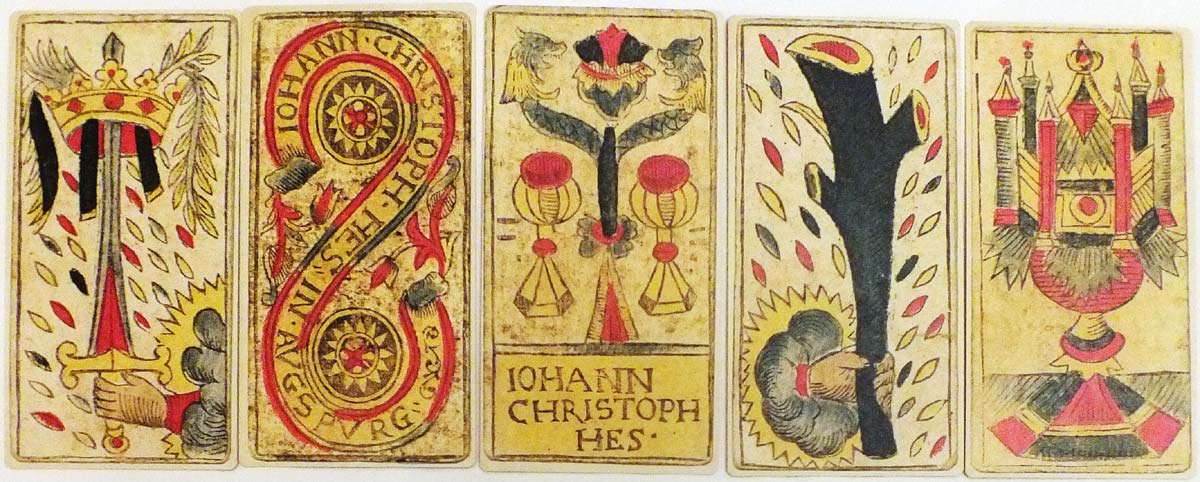
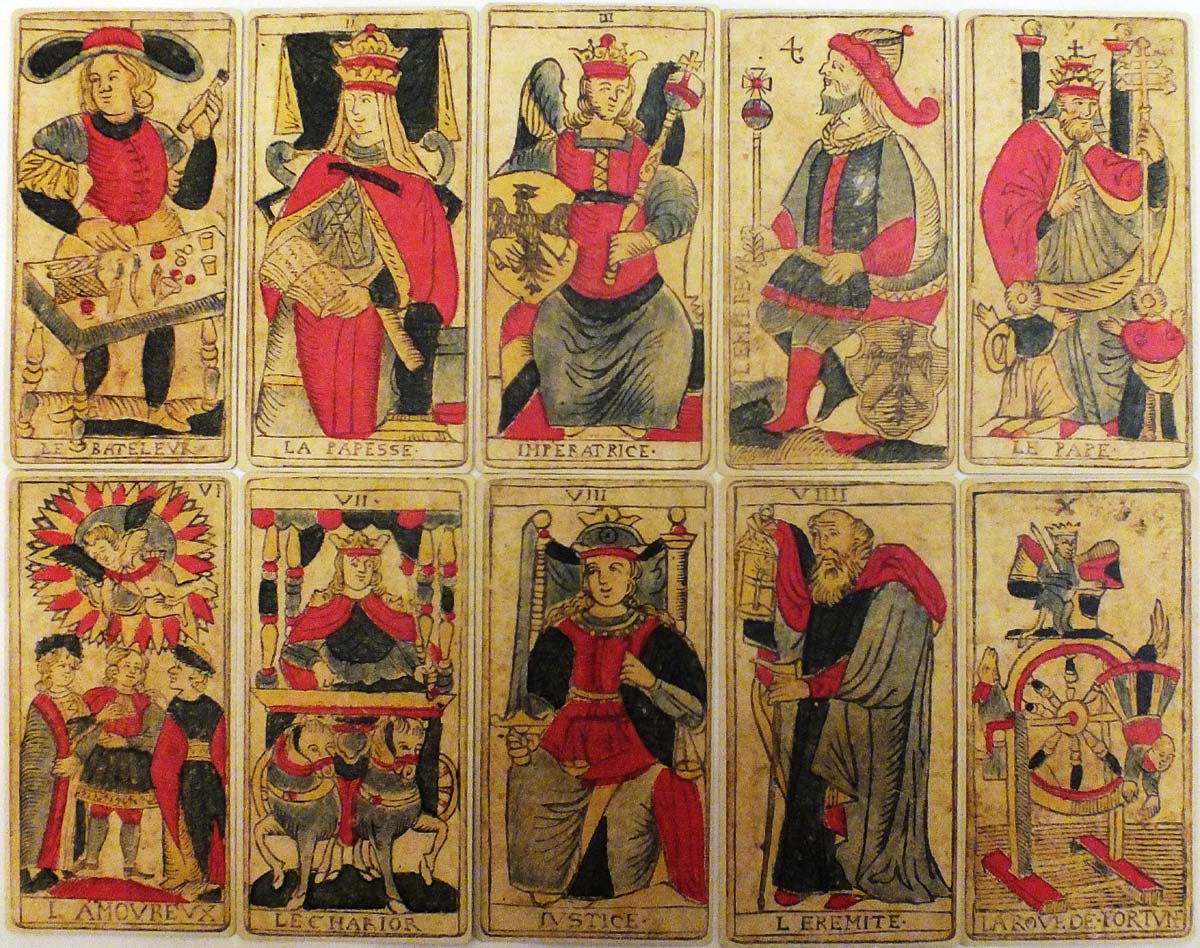
Above: the facsimile edition of a Marseille style Tarot by Iohann Christoph Hes, Augsburg, c.1750. 78 cards + extra warranty card + booklet + cartomancy leaflet in box. The booklet includes two appendices: "Map of the Tarot Factories in Europe in the 18th century", which shows the spread of these cards in the Germanic area, and "Mozart and the Tarot", which tells the great musician’s passion for this game.

By Simon Wintle
Member since February 01, 1996
Founder and editor of the World of Playing Cards since 1996. He is a former committee member of the IPCS and was graphics editor of The Playing-Card journal for many years. He has lived at various times in Chile, England and Wales and is currently living in Extremadura, Spain. Simon's first limited edition pack of playing cards was a replica of a seventeenth century traditional English pack, which he produced from woodblocks and stencils.
Trending Articles
Popular articles from the past 28 days
Related Articles
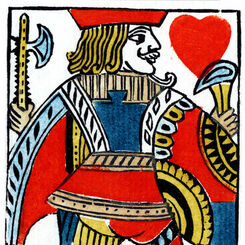
Woodblock and Stencil Jack of Hearts
A limited edition art print of the Jack of Hearts 1984 woodblock joker.
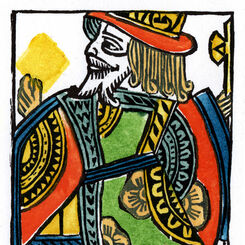
Woodblock and Stencil King of Diamonds
A limited edition art print of the King of Diamonds 1984 woodblock joker.
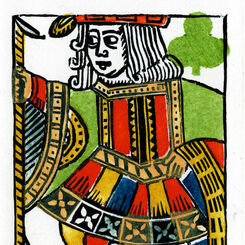
Woodblock and Stencil Jack of Clubs
A limited edition art print of the Jack of Clubs 1984 woodblock joker.
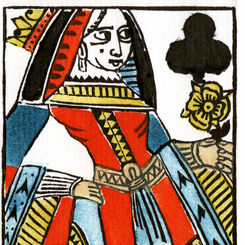
Woodblock and Stencil Queen of Clubs
A limited edition art print of the Queen of Clubs 1984 woodblock joker.
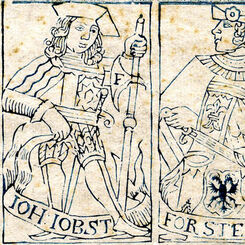
Uncut Sheet by Johann Jobst Forster
A proof sheet containing twelve court cards of conventional French type.
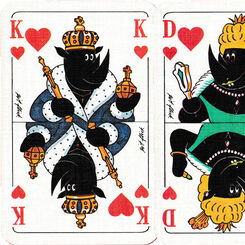
Mit Rhino auftrumpfen
Black rhinos on a publicity pack for Armstrong, a flooring company, with comic designs by Pit Flick....
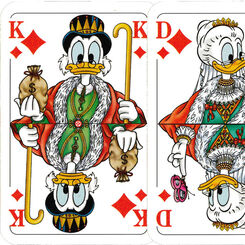
Walt Disney Cards II
Mickey, Minnie, Pluto and other familiar Disney characters.
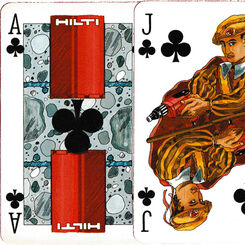
Hilti I
Promotional pack for Hilti power tools, with courts in medieval costume and non-standard pips.
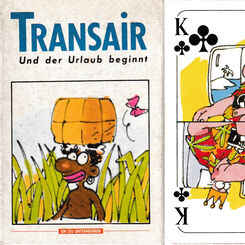
Transair
Humorous designs promoting Transair, a German charter flight operator.
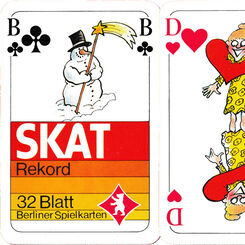
Merz Pharma Skat
Comic designs promoting Merz Pharma, a German drug company.
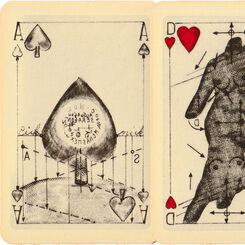
escART, ec-ART, SKAT
Fully illustrated pack printed from etchings by Johannes Vennekamp.
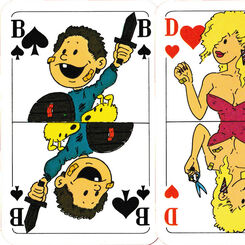
Hansaplast®
Advertising pack for Hansaplast, with comic courts sporting sticking plasters.
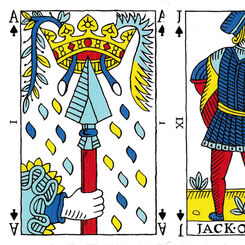
Pike and Clover playing cards
Pike and Clover playing cards created by Ian Cumpstey, Cumbria, UK, 2018.
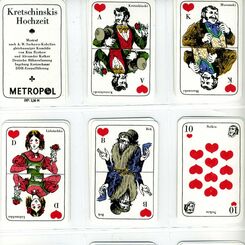
Wedding of Krechinsky • Свадьба Кречинского
A pack of cards depicting characters from the famous play "The Wedding of Krechinsky" by Sukhovo-Kob...
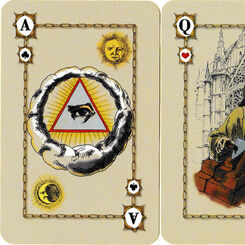
Freimaurer Spielkarten / Masonic playing cards
Masonic playing cards created by Ivan Wojnikow, 2004.
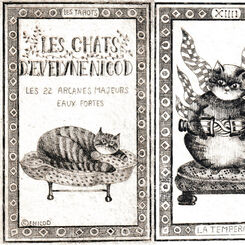
I Gatti Originali di Evelyne Nicod
Etchings of cats on a set of major arcana created by Evelyne Nicod.
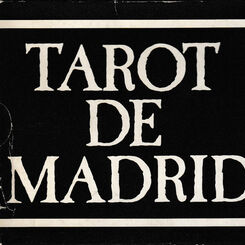
Tarot de Madrid
Black-and-white photographs of models whose faces are made up using elements found on the major arca...
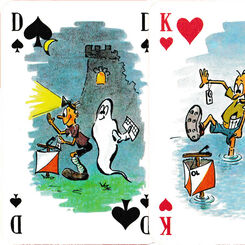
Orientierungslauf Skat
Humorous designs by Helmut Härtelt on the subject of orienteering.
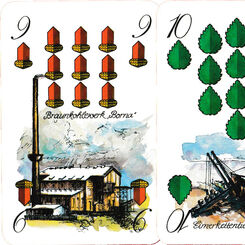
Borna Skat
Publicity pack for the Saxon town of Borna, with designs by Andreas Wachter.
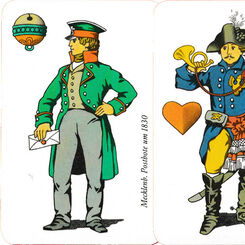
Postgeschichte
A celebration of different postal systems in Germany from 1630 to 1850, with designs by Volker Hartm...
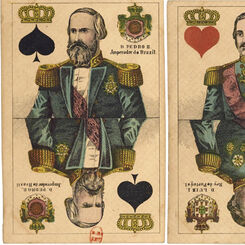
Kings and Queens of Brazil & Portugal
Historical playing cards by C. L. Wüst depicting monarchs of Brazil and Portugal.
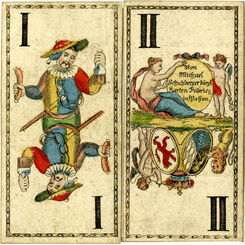
Mythological tarot by Michael Schatzberger
Mythological tarot by Michael Schatzberger, Passau, Bavaria, early 19th century.
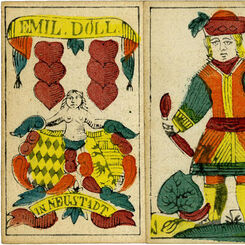
Ansbach pattern by Emil Doll
Later Ansbach or Nürnberg pattern by Emil Doll, Neustadt.
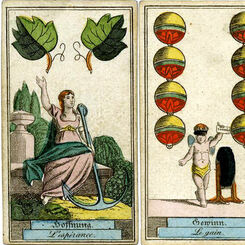
Cartomancy deck by Johann Ernst Backofen
German-suited Cartomancy deck published by Johann Ernst Backofen, Nürnberg.
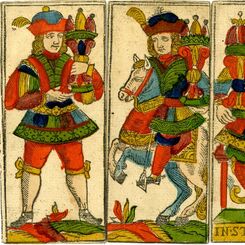
Trappola pack by Joseph Fetscher
Trappola pack published by Joseph Fetscher, Graz, 1739.
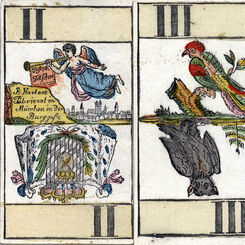
Animal Tarot by Joseph Fetscher
French-suited Natural History Tarot deck by Joseph Fetscher, Munich, c.1820.
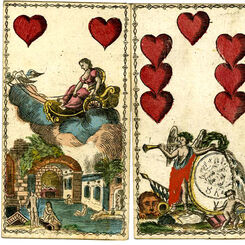
Heathen Wars
German-suited ‘Heathen War’ playing cards published by Joseph Fetscher, Munich, c.1820.
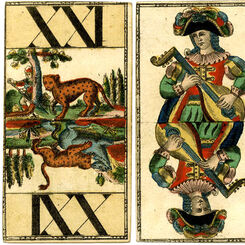
Mythological and Allegorical tarot
Mythological and Allegorical tarot produced by Peter Paul Fetscher junior, Munich.
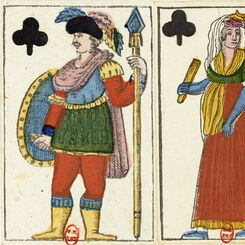
Fantasy deck by Joseph Fetscher
Fantasy French-suited pack produced by Joseph Fetscher, Munich, c.1825.
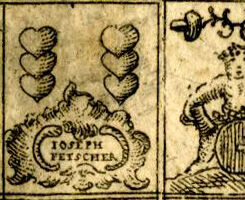
Miniature playing cards by Joseph Fetscher
Uncut sheet of miniature Bavarian playing cards by Joseph Fetscher.
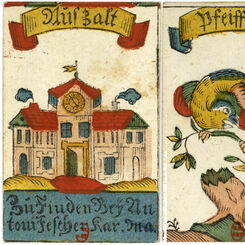
Vogelspiel
Vogelspiel, a German card game known as the “cuckoo game” also known as “Gnau”.
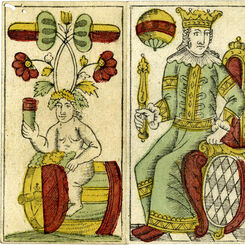
Bavaria pattern
Classic German-suited Bavarian pattern by Joseph Fetscher, Munich, early 19th century.
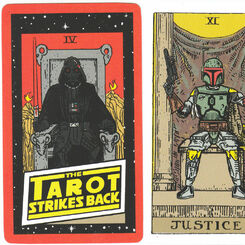
The Tarot Strikes Back
Roy Huteson Stewart's The Tarot Strikes Back combines Star Wars with Rider-Waite tarot imagery.

Animal Tarot by Andreas Benedict Göbl
French-suited Animal Tarot deck produced by Andreas Benedict Göbl, Munich.

Standard French-suited Bavarian deck by Göbl
French-suited Bavarian deck by Andreas Benedict Göbl, late 18th c.
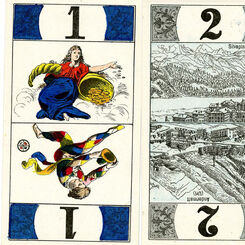
Swiss Scenic Tarock
Scenic Tarock deck produced by Fabrique de Cartes J. Müller & Cie (Schaffhouse), Suisse.
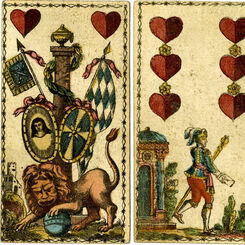
Historical playing cards by Joseph Fetscher
Historical playing cards by Joseph Fetscher, Munich, c.1820.
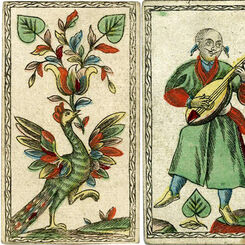
Illustrated piquet cards
Bavarian piquet cards with oriental illustrations produced by Andreas Benedict Göbl, Munich, late 18...
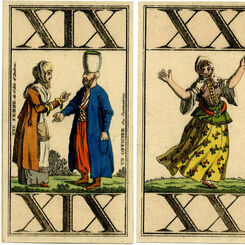
Costumes of Turkey Tarot
‘National Costumes of Turkey’ tarot by Industrie Comptoir, Leipzig, c.1800-1825.
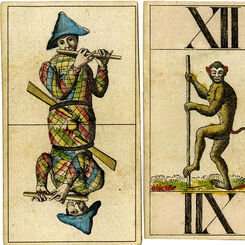
Natural History Tarot
Natural History Tarot published by G M, Germany, early 19th C.
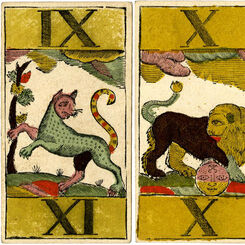
Animal Tarot by J. B Dubois
French-suited Bavarian Animal Tarot by J B Dubois, Liège, Belgium, late 18th C.

Æsop’s Fables tarot
French-suited Æsop’s fables tarot produced by Leipzig Industrie Comptoir, c.1800-1825.
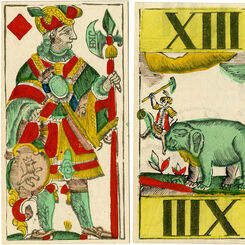
Animal Tarot by J. T Dubois
Early 19th century Animal Tarot pack produced by J T Dubois, Liège, Belgium.
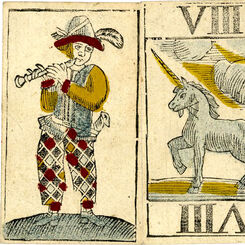
Animal Tarot by G. Larmoyer
Flemish Animal Tarot deck by G. Larmoyer, Liège, 1753.


